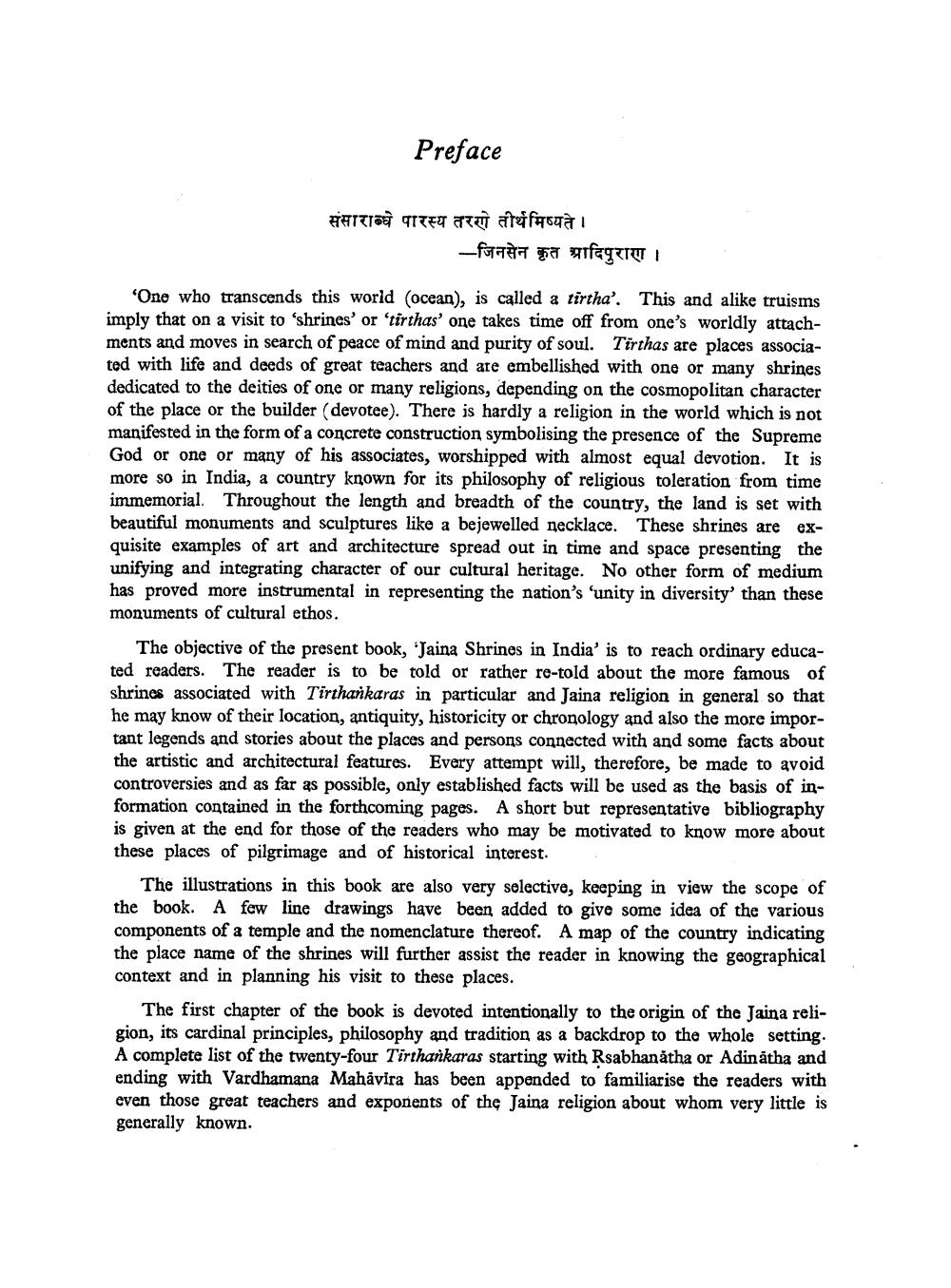________________
Preface
संसाराब्धे पारस्य तरणे तीर्थ मिष्यते ।
- Ada ga gifagaru
'One who transcends this world ocean), is called a tirtha'. This and alike truisms imply that on a visit to 'shrines' or 'tirthas' one takes time off from one's worldly attachments and moves in search of peace of mind and purity of soul. Tirthas are places associated with life and deeds of great teachers and are embellished with one or many shrines dedicated to the deities of one or many religions, depending on the cosmopolitan character of the place or the builder (devotee). There is hardly a religion in the world which is not manifested in the form of a concrete construction symbolising the presence of the Supreme God or one or many of his associates, worshipped with almost equal devotion. It is more so in India, a country known for its philosophy of religious toleration from time immemorial. Throughout the length and breadth of the country, the land is set with beautiful monuments and sculptures like a bejewelled necklace. These shrines are exquisite examples of art and architecture spread out in time and space presenting the unifying and integrating character of our cultural heritage. No other form of medium has proved more instrumental in representing the nation's ‘unity in diversity' than these monuments of cultural ethos.
The objective of the present book, 'Jaina Shrines in India' is to reach ordinary educated readers. The reader is to be told or rather re-told about the more famous of shrines associated with Tirthankaras in particular and Jaina religion in general so that he may know of their location, antiquity, historicity or chronology and also the more important legends and stories about the places and persons connected with and some facts about the artistic and architectural features. Every attempt will, therefore, be made to avoid controversies and as far as possible, only established facts will be used as the basis of information contained in the forthcoming pages. A short but representative bibliography is given at the end for those of the readers who may be motivated to know more about these places of pilgrimage and of historical interest.
The illustrations in this book are also very selective, keeping in view the scope of the book. A few line drawings have been added to give some idea of the various components of a temple and the nomenclature thereof. A map of the country indicating the place name of the shrines will further assist the reader in knowing the geographical context and in planning his visit to these places.
The first chapter of the book is devoted intentionally to the origin of the Jaina religion, its cardinal principles, philosophy and tradition as a backdrop to the whole setting. A complete list of the twenty-four Tirthankaras starting with Rsabhanåtha or Adinatha and ending with Vardhamana Mahåvira has been appended to familiarise the readers with even those great teachers and exponents of the Jaina religion about whom very little is generally known.




